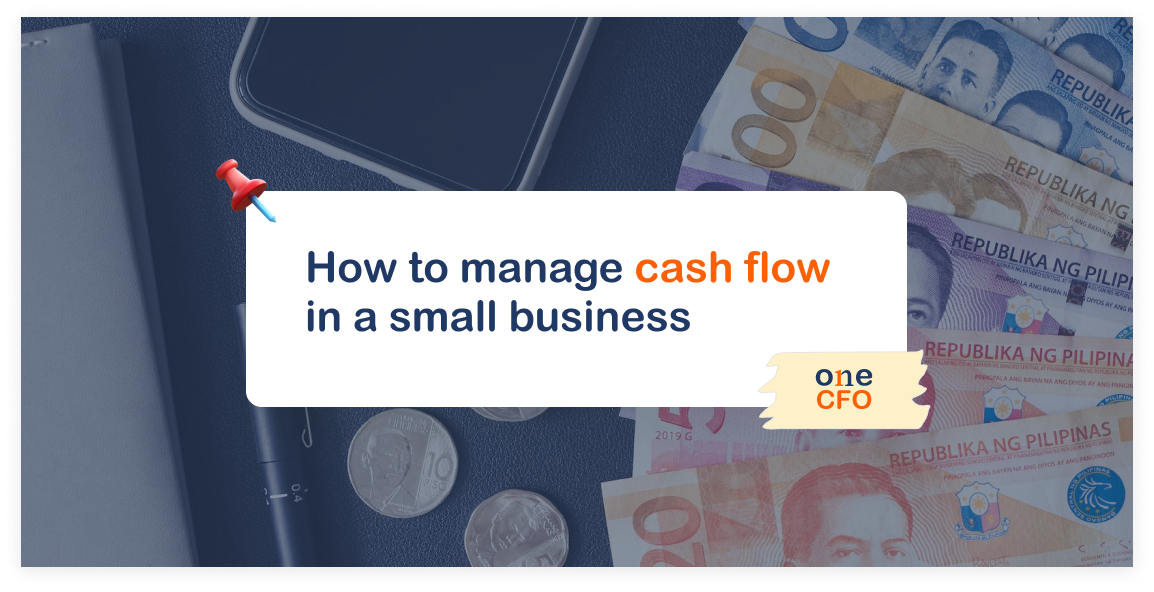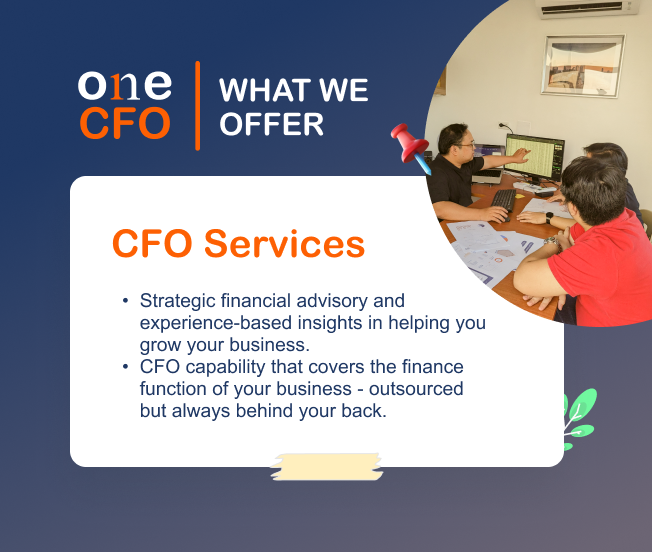
June 3, 2023 | 1:28 am
Table of Contents
Regarding finances, most small business owners only focus on earning revenue or making a
profit. However, managing the cash flow is important in determining if your small business
is financially stable.
Being a profitable business doesn’t automatically mean you can settle your bills, pay your
suppliers, or cover your employees’ salaries.
For your small business to earn money while keeping the lights on, you should know how to
manage your cash flow. This includes proper financial planning, forecasting, management of
working capital, and knowing your financing options, to name a few.
Cash flow determines whether your current cash is enough to cover your expenses or if you
have some extra you can invest back into your business. Failure to manage your cash flow can
lead to poor decisions that could compromise your business’ survival.
This guide lists effective small business cash flow management so you won’t have to worry
about keeping your business afloat.
What is cash flow in a business?
Cash flow is the movement of funds in and out of your business. In simple terms, cash flows
into your business when you earn money through sales or investments. Meanwhile, cash flows
out when you spend money on your operations and other purchases.
Ideally, businesses should always have enough cash to pay for all their expenses. However,
sometimes your business won’t make enough revenue to cover your bills, which leads to a
negative cash flow.
Effective cash flow management means tracking how your money moves through all cycles in
your business. This lets you see when investing, buying additional assets, or paying your
debts is best. It also helps you plan and prevent cash issues, especially during the
off-season.
Understanding your cash flow also helps you make sound business decisions. For example,
taking on a big contract might not be wise if you won’t have enough working capital to
finish it.
How to manage cash flow in a small business?
Unlike large companies, small businesses have limited options when it comes to financing.
They also typically have less available cash and smaller allowance in their profit margins.
Because of these reasons, knowing how to manage your
cash flow as a small
business owner is
more important than ever.
Managing your cash flow will help you make the right decisions to keep your business
running. Here are some steps you can take:

Understand your current financial status
The first step in cash flow management is understanding the current financial status of your
business.
Start with tracking how much money you receive and spend in your business over a certain
period. In this step, knowing the best bookkeeping
practices and avoiding common mistakes can significantly help.
Once you’ve tracked your cash flow, you can create your
cash flow statement (CFS). This
document summarizes the different cash and cash equivalents that flows in and out of your
business.
Your CFS also determines how financially sustainable your business is. It determines your
business’ liquidity and
whether the money you make is enough to fund your operations and
settle your debts.
If your CFS shows a negative cash flow, don’t panic immediately. This doesn’t automatically
mean that your business will go bankrupt - it could be that you have invested in an
expansion or taken a major project that requires bigger working capital.
Either way, you should carefully analyze your CFS to identify gaps and create the
appropriate plans to address them.
Prepare a financial forecast
You should create a cash flow forecast using the data surrounding your cash flow.
Cash flow forecasting lets you predict the movement of your money in a future time frame.
This will show you any cash shortages or surpluses you will have along the different cycles
in your business.
To create your forecast,
list your possible income and expenditures using historical data
involving your sales, customer payments, and business expenses.
For your sales data, you should factor in your business' peak and low seasons. For example,
you may have a lot of customers during Christmas and make only a few sales during the
summer.
It also helps to consider the payment behavior of your customers. Typically, in businesses
that sell services, customers may take some time to pay their dues after you invoiced them.
Make sure to include these considerations in your forecast.
When projecting your expenses, include both fixed and variable costs. This includes
operating expenses, supplier payments, and dues for any debts you have.
By forecasting your cash flow, you can determine patterns and see when you need to adjust or
ask for financial assistance.
Creating your cash flow statements and forecasts can be confusing.
If you need help figuring out where to start, we recommend consulting professionals who can
help you. Aside from creating your CFS and forecast, they can also provide insights on how
you can best manage your cash flow.
Improve your payment collection strategy
Once you’ve delivered your goods or service, ensure you collect payment promptly to prevent
any backlogs in your cash flow.
One way to do this is to have a better invoicing system. Review your current invoice payment
terms and adjust them accordingly. You can set earlier deadlines for your clients or
make
sure you state your terms as clearly as possible.
Another tactic is to provide promos or discounts to incentivize clients to make early
payments or pay in full. Doing so also helps build better client relationships.
Furthermore, implement a downpayment scheme to increase your capital for bigger projects.
This will give your business the cash to finance the project as it goes along.
Highly recommended, too, is leveraging technology in your invoicing system. You can automate
the way you send your invoices and client reminders. You can also set up an automatic
billing system to charge your clients’ cards without hassle.
Providing multiple payment options, such as bank transfer, GCash or Maya
payments, credit
cards, and the like, will also streamline how you collect customer payments.
Sometimes, you may have to provide special terms for your clients. When this happens, assess
their creditworthiness or ability to pay. You can check their payment history or see what
other businesses say about them.
Negotiate with your suppliers and vendors
Before your cash flow turns red, you can plan by negotiating with your suppliers and
vendors
for better credit terms.
You can request changing your payment frequency and deadlines or discuss installment
options. Depending on your business relationship with suppliers and vendors, they may grant
these requests.
You can also automate your payments to your vendors or set up alerts for payment deadlines.
This prevents you from forgetting your account payables and makes it easier to track cash
flow.
Manage your inventory wisely

When you buy inventory, your money becomes tied up until you sell these goods and convert
them back to cash.
A problem in your cash flow arises when you fail to sell your inventory immediately since
your money becomes stagnant. Accumulating too much supply can also mean additional costs for
storage or, worse, spoilage of goods.
You should have a proper inventory management system to
prevent cash flow issues. You can
use technology to manage your inventory and create the necessary documentation efficiently.
Also, make sure that there is proper communication between your finance and supply teams.
Together, they can determine how much inventory you should keep to meet customers’ demands
and minimize costs.
If the business is going slow, conducting a sale or giving discounts can help you convert
inventory to cash quickly. Just be cautious about always having sales as your customers may
come to expect it.
Price your services and goods right
Another essential step in managing your cash flow is setting the right prices for your goods
or services.
You can set a certain percentage of profit you want to make per item. Compute how much it
costs to produce, source, or sell the product, and add the profit you want to make.
You can also experiment to see how many customers are willing to pay for your goods at
specific prices. With some math, you can compute the maximum possible profit when you price
your product a certain amount.
Another way you can price what you’re selling is by comparing it to your competitors’
prices. Here, it’s essential to identify what sets your products apart and determine how to
justify a cheaper or more expensive price.
Also, remember to adjust your prices according to the inflation. Although it may seem
counterintuitive to raise prices, doing so is necessary, especially if the cost of producing
your good becomes more expensive.
An alternative to raising prices is the shrinkflation strategy, where you
reduce the product
or quality of your goods and sell it at the same price. This may keep your profits intact
but can lead to customer dissatisfaction. So, weigh the pros and cons first before going for
this option.
Whichever you choose, ensure your pricing remains reasonable, especially for your target
market.
Explore financial assistance options
Exploring financial assistance or lending options is also helpful if your cash flow becomes
negative. You can use this to bridge temporary gaps, especially during quiet seasons.
With the rise of financial technology apps, many alternative or online lending services are
now available. These are useful if you want to take a loan quickly and hassle-free.
However, these quick loans incur high interest, so read the terms properly before availing
of one.
If you’re not crunched for time, you may opt for bank loans as they have lower interest,
albeit a longer processing time. Visit and inquire with different banks to compare and see
which would fit your need the best.
If you only need the extra funds for short-term expenses, you can choose to open a business
line of credit instead. This is also perfect as a backup for any unexpected expenses.
Build a cash reserve
Building a cash reserve for your business is a good practice in managing your cash flow.
This is your business emergency fund and should ideally amount to three to six months’ expenses.
A cash reserve lets you weather any low points or losses in your business. This way, you can
avoid taking on debts, closing parts of the company, or laying off employees.
You can also use your cash reserve to stay ahead in the business. With this fund, you can
invest or expand your business when the right opportunity comes.
Review your cash flow regularly
You must review the cash flow regularly even when you’ve developed the “perfect” strategy
for managing your cash flow.
Mistakes can still happen when doing bookkeeping that can affect your cash balances. Setting
up an automated bookkeeping system avoids these mistakes and lets you
see the cash flow
quickly and accurately.
Business circumstances and the economic market constantly fluctuate, so you should stay
proactive and watch for possible cash flow issues.
Reevaluate your budgeting whenever necessary and change your business financial management
as you see fit.
Manage your cash flow with outsourced CFO services

Ensuring your business is profitable while managing your cash flow simultaneously can be
tricky - but they don’t have to be! Outsource the financial services needed to keep your
business afloat.
OneCFO provides CFO-level
insights and advice to help you grow and scale your business. We
help your business strategize better with financial modeling, forecasting, budgeting, and
reviews.
Moreover, we help small businesses like yours manage bookkeeping, tax, and payroll so you
can focus better on running your business.
Contact us now to
learn more!
Read our disclaimer here.